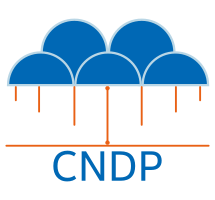6. Pktmbuf Library¶
The pktmbuf library provides the ability to allocate and free buffers (pktmbufs) that may be used by the CNDP application to store message buffers. The message buffers are stored in a mempool, using the Mempool Library.
A pktmbuf struct generally carries network packet buffers, but it can actually be any data (control data, events, …). The pktmbuf header structure is kept as small as possible and currently uses just one cache line, with the most frequently used fields being in that cache line.
6.1. Design of Packet Buffers¶
For the storage of the packet data (including protocol headers), embed metadata within a single memory buffer the structure followed by a fixed size area for the packet data. The advantage of this method is that it only needs one operation to allocate/free the whole memory representation of a packet.
The metadata contains control information such as message type, length, offset to the start of the data and some commonly used metadata checksum offload with protocol header offsets/lengths.
For a newly allocated pktmbuf, the area at which the data begins in the message buffer is CNE_PKTMBUF_HEADROOM bytes after the beginning of the buffer, which is cache aligned. Message buffers may be used to carry control information, packets, events, and so on between different entities in the system.
Fig. 6.1 shows the basic layout of pktmbuf_t structure related to Mempool structures.

Fig. 6.1 Pktmbuf Layout¶
The Buffer Manager implements a fairly standard set of buffer access functions to manipulate network packets. The following set of figures help define the Rx/Tx usage model with AF_XDP.

Fig. 6.2 RX UMEM pktmbuf layout¶
The TX buffer layout is the same as the RX buffer layout, but it does use some different offset values to align with AF_XDP requirements.

Fig. 6.3 TX UMEM pktmbuf layout¶
The Rx/Tx buffers are somewhat defined by the AF_XDP UMEM buffer layout.
6.2. Pktmbuf and UMEM layout¶
The AF_XDP design uses a UMEM buffer and rings to move data from userspace to kernel. The rings operate on UMEM buffer offsets instead of memory points to account for kernel and userspace having different address spaces. A UMEM is one large memory array of buffers for packet data to be sent and received to remove having to copy the packet to/from the kernel/userspace.
A UMEM buffer space can be shared between between multiple AF_XDP sockets, which allows buffers to be shared between sockets without needing to copy the packet data. If using multiple UMEMs with different AF_XDP sockets plus sending packets between these UMEMs the application would need to copy the data. Normally, a set of AF_XDP sockets will share a single UMEM. CNDP uses mempools to allocate and free buffers to get the best performance, which means each AF_XDP socket needs to have its own mempool set of buffers in the UMEM buffer space.
A multiple AF_XDP sockets could share a single mempool, but a socket could starve other sockets of buffers if some type of limit is put into place. We use a mempool per socket to achive this type of limiting of a single socket consuming all of the buffers.

Fig. 6.4 UMEM with multiple pktmbuf pools¶
6.3. Buffers Stored in Memory Pools (UMEM)¶
The Buffer Manager uses the Mempool Library to allocate buffers. For CNDP we use a mempool to help define and allocate buffers from a UMEM with AF_XDP. When creating a UMEM we use the mempool buffer memory as the UMEM buffers memory as in the figure Fig. 6.5 below. An pktmbuf contains a field indicating the pool that it originated from. When calling pktmbuf_free(m), the pktmbuf returns to its original pool.

Fig. 6.5 AF_XDP memory layout¶
6.4. Constructors¶
Packet pktmbuf constructors are provided by the API. The pktmbuf_init() function initializes some fields in the pktmbuf structure that are not modified by the user once created (pktmbuf type, origin pool, buffer start address, and so on). This function is given as a callback function to the mempool_create() function at pool creation time.
6.5. Allocating and Freeing pktmbufs¶
Allocating a new pktmbuf requires the user to specify the mempool from which the pktmbuf should be taken. For any newly-allocated pktmbuf, it contains one segment, with a length of 0. The offset to data is initialized to have some bytes of headroom in the buffer (CNE_PKTMBUF_HEADROOM).
Freeing a pktmbuf means returning it into its original mempool. The content of an pktmbuf is not modified when it is stored in a pool (as a free pktmbuf). Fields initialized by the constructor do not need to be re-initialized at pktmbuf allocation.
6.6. Manipulating pktmbufs¶
This library provides some functions for manipulating the data in a packet pktmbuf. For instance:
Get data length
Get a pointer to the start of data
Prepend data before data
Append data after data
Remove data at the beginning of the buffer (pktmbuf_adj())
Remove data at the end of the buffer (pktmbuf_trim()) Refer to the CNDP API Reference for details.
6.7. Meta Information¶
Some information is stored in the pktmbuf header i.e. data offset, packet length, lport number, offload data and other information about the packet. More optional metadata is stored after the header in a metadata structure, which part of the headroom of the pktmbuf. The metadata information is currently used by the CNET stack to hold more information about the packet.
At this time CNDP does not support chaining of pktmbuf_t structures.
